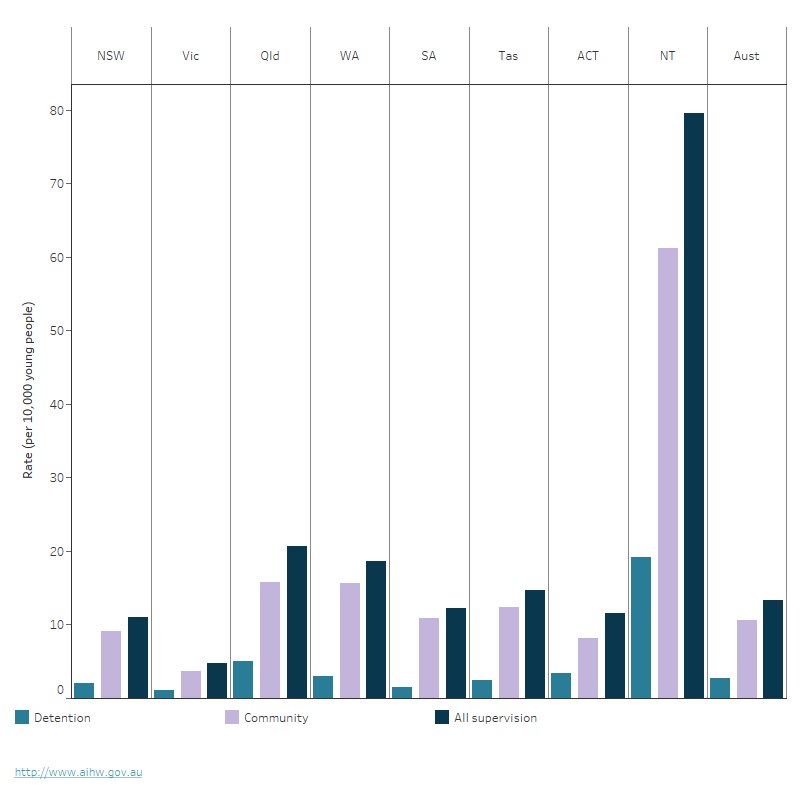People who commit or allegedly commit a crime when aged 10–17 may be dealt with under the youth justice system. Each state and territory in Australia has its own youth justice legislation, policies and practices but the general processes by which young people are charged, and the types of legal orders available to the courts, are similar.
Some people aged 18 and over may also be supervised in the youth justice system. Depending on the jurisdiction, this may be because they were apprehended for a crime that was (allegedly) committed when they were 17 or younger, their existing supervision continues once they turn 18 (instead of being transferred to the adult correctional system), or a court determines that they should be detained in a youth justice facility due to their vulnerability or immaturity.
Young people may be supervised when they are unsentenced – that is, when they are awaiting the outcome of their court matter or sentencing – or they may be sentenced to supervision after being proven guilty in court. Both unsentenced and sentenced supervision can take place in the community or in a detention facility (see glossary).
Data on this page are taken from the Australian Institute of Health and Welfare's (AIHW) Youth Justice National Minimum Data Set and includes information about young people in Australia who were under youth justice supervision during 2022–23 and recent trends (AIHW 2024). Numbers include young people of all ages (including those aged 18 and over) unless otherwise specified. Population rates are only calculated for people aged 10–17.
How many people are under youth justice supervision?
On an average day in 2022–23, 4,542 people aged 10 and over were under youth justice supervision in Australia. Among the population aged 10–17, this was a rate of 13 per 10,000 people. A total of 9,157 young people were supervised by youth justice at some time during the year (from 1 July 2022 to 30 June 2023).
Just over 4 in 5 (82%) young people under supervision on an average day in 2022–23 were supervised in the community, and 18% were in detention.
Most (82%) young people under community-based supervision on an average day were serving a sentence, while almost 4 in 5 (80%) of those in detention were unsentenced.
Variation in rates of supervision
On an average day in 2022–23, for young people aged 10–17:
- Aboriginal and Torres Strait Islander (First Nations) people were about 23 times as likely as non-Indigenous Australians to be under supervision, about 22 times as likely to be under community-based supervision, and about 28 times as likely to be in detention (see Community safety for First Nations people).
- Males were almost 4 times as likely as females to be under supervision.
- Young people from Very remote areas were about 11 times as likely as those from Major cities to be under supervision.
- Young people from the lowest socioeconomic areas were about 7 times as likely as those from the highest socioeconomic areas to be under supervision.
Among the states and territories, rates of supervision for young people aged 10–17 years ranged from 4.7 per 10,000 people on an average day in Victoria to 79 per 10,000 in the Northern Territory (Figure 1).





